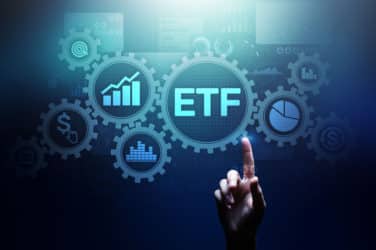

Institutional traders across the buy side and sell side are all about time efficiency – automating and streamlining as much workflow as possible so they can better focus on high-value tasks such as sourcing liquidity for large trades, optimizing internal collaboration and building and maintaining relationships.
This laser focus on efficiency comes to the fore on the trader’s desktop, which typically hosts a multitude of disparate systems, such as the order management and execution management systems, plus systems for, data, risk, CRM, and other mission critical functions. The result of a fragmented desktop is the dreaded ‘swivel-chair effect’, which requires traders to navigate in and out of different systems any number of times over the course of the day.
Those minutes add up to real time that could have been better spent on trading.
“None of these applications communicate with each other at the desktop level,” said Reena Raichura, Director, Head of Product Solutions at Glue42. “This means traders are confined to the data and the workflows within single applications, but their job requires them to work across multiple applications.”
The desktop conundrum was brought to light in a big way in 2020 when an executive from a large buy-side firm told an industry conference that his firm’s traders had to log into as many as 27 applications on any given day. Industry professionals knew the number was unwieldy and higher than it should be, but 27 far exceeded the typical off-the-cuff estimate of perhaps 10 or 20.
Steve Grob, Founder of consultancy Vision57 and a 30-year trading technology veteran, noted a fundamental disconnect in how technology has developed and evolved, and how the role of institutional traders has evolved.
“Whether you’re buy side or sell side, your job is monetizing data. You have information – prices, signals, news, charting – and you make money from it,” Grob said. “But all that data you’re trying to understand and monetize, you’re looking at through many different views. It’s not synchronized and there are no common notifications.”
“Our industry has developed by ‘just add another application’. Images of trading desks with a gazillion screens is actually an indictment on our industry’s inability to solve the problem,” Grob continued. “Adding screens isn’t the answer. The answer lies in separating the data from the applications. That’s what you can start to do with integration platforms, because suddenly it’s the data that’s driving how you navigate your day.”
Traders have long sought a more streamlined user experience from their desktop, that enables more efficient workflows and data shared across applications. The COVID-19 pandemic over the past couple years has intensified that quest, as traders working remotely have less screen real estate to work with and thus a greater need to optimize what they do have.
“A desktop integration platform focuses on simplifying user workflows across multiple applications, to create a cohesive and unified desktop experience,” Glue42’s Raichura said. “It enables the creation of multi-app workflows, personalized workspaces, layouts, app stores, and centralized notifications. This results in an intelligent and integrated desktop, built to empower the user to work smarter, not harder.”
What’s Next
Advancement in desktop integration/interoperability was cited as one of 10 market structure trends to watch this year by Coalition Greenwich. “Process automation is high on nearly everyone’s priority list for 2022. But since no one works with a single technology provider anymore, more automation requires disparate systems communicating with one another without months of development,” the consultancy stated in a January 2022 report.
“Tech providers today increasingly focus on providing everything ‘as a service,’ which is a great step toward easy integration and a best-of-breed approach. But until those APIs take a standard approach, programmers and custom development are still needed almost every time,” the report continued. “In 2022, we hope and expect broader adoption of these new interoperability mechanisms (i.e., FDC3) to increasingly take hold.”
Glue42’s Raichura expects the marketplace to sort itself out in terms of which products and services meet the integration and interoperability needs of institutional traders, and which don’t address the problem.
“Technologies that can simplify and automate workflows, deliver change at speed, and create unified platform experiences will succeed,” she said. “It’s about flows over features, ecosystems over islands, and collaboration over competition.”








